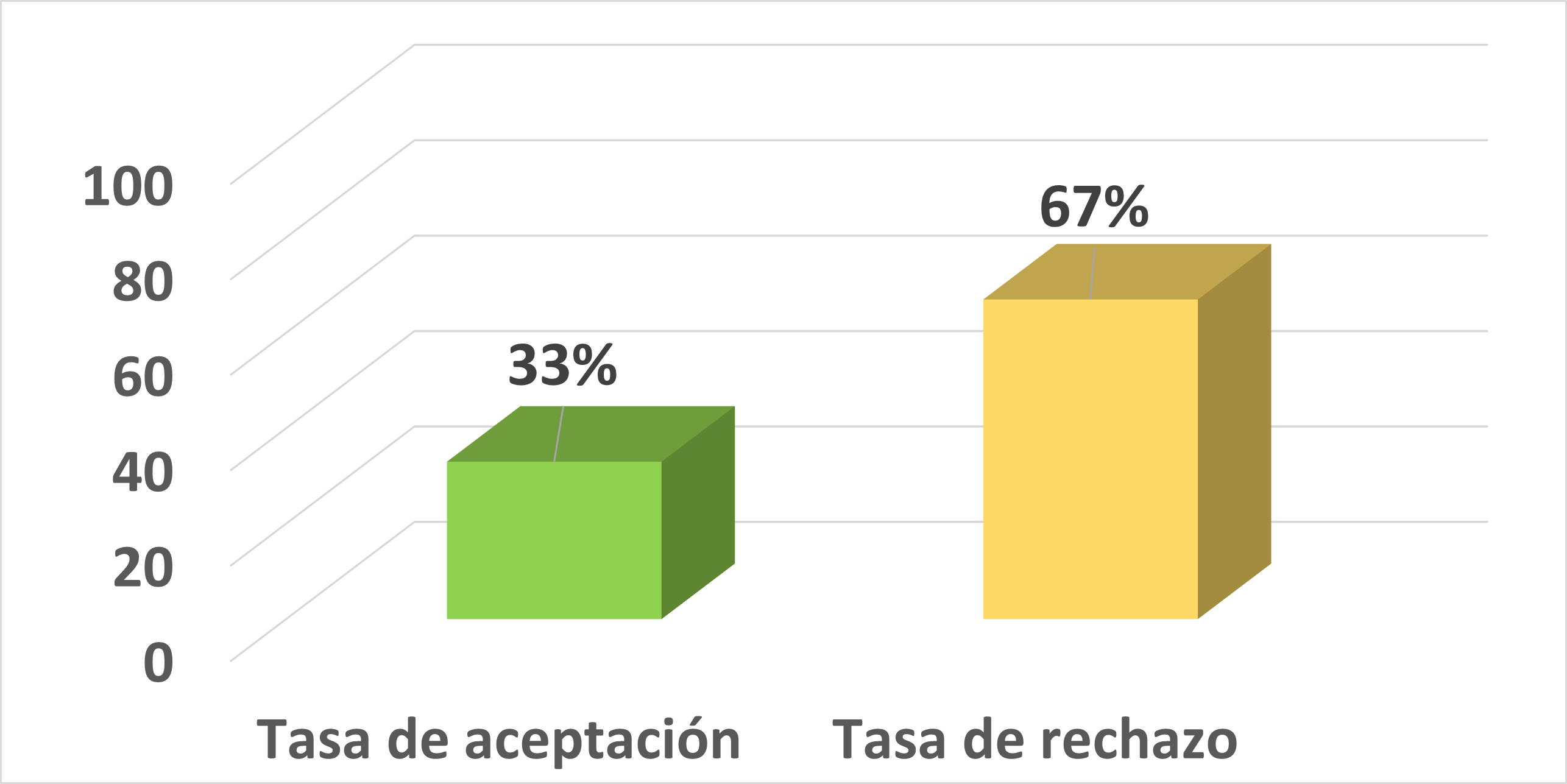Comparative study of feature extraction methods and classification of event-related potentials P300
Keywords:
Brain-Computer Interface, BCI, P300, Análisis de Componentes Principales PCA, Wavelet transform, LSVM, QSVM, KNN, EEG.Abstract
The objective of the present work is to evaluate the potential of two types of classifiers, Vector Support Machines SVM and K-Nearest Neighbors KNN, to detect event-related potentials (P300). These two classifiers are trained and assessed with morphological characteristics and with the approximation coefficients of the Wavelet Discrete transformation. Before feature extraction, electroencephalographic (EEG) signals were processed to remove artifacts, filtered, normalized and segmented. This whole process was performed for samples with the synchronized average of 15 P300 signals and samples of only one P300 signal. In the final part of the document, we present a comparative analysis of the results and propose alternatives that could contribute to an improvement of the classification accuracy in future works.References
Akram F., S.M. Han & T.S. Kim (2015). An efficient word typing P300-BCI system using a modified T9 interface and random forest classifier. Computers in biology and medicine 56: 30-36.
Alvarado Reyes J. & C.E. Stern Forgach (2010). Un complemento al teorema de Nyquist. Revista mexicana de física E 56(2): 165-171.
Amini Z., V. Abootalebi & M.T. Sadegui (2010). A Comparative Study of Feature Extraction Methods in P300 Detection. Proceedings of the 17th Iranian Conference of Biomedical Engineering (ICBME2010), Teheran.
Anderer P., B. Saletu, H.V. Semlitsch & R.D. Pascual-Marqui (2002). Structural and energetic processes related to P300: LORETA findings in depression and effects of antidepressant drugs. Methods Find Exp Clin Pharmacol 24: 85-91.
Blankertz B., G. Curio & K.R. Müller (2002). Classifying single trial eeg: Towards brain computer. Advances in Neural Information Processing Systems 14(1): 157-164.
Borisoff J., S. Mason, A. Bashashati & G. Birch (2004). Brain-computer interface design for asynchronous control applications: Improvements to the lf-asd asynchronous brain switch. IEEE Transactions on Biomedical Engineering 51(6): 985-992.
Burges C. (1998). A tutorial on support vector machines for pattern recognition. Data Mining Knowledge Discovery 2: 121-167.
Demiralp T., A. Ademoglu, Y. Istefanopulos, C. Başar-Eroglu & E. Başar (2001). Wavelet analysis of oddball P300. Internacional Journal of Psychophysiology 39(1): 221-227.
Donchin E., K. Spencer & R. Wijesinghe (2000). The mental prosthesis: Assesing the speed of a p300-based brain-computer interface. IEEE Transactions on Neural Systems and Rehabilitation Enginering 8(2): 174-179.
Fabiani G., D. McFarland, R. Wolpaw & P. Pfurtscheller (2004). Conversion of eeg activity into cursor movement by brain-computer. IEEE Transactions on Neural Systems and Rehabilitation Enginering 12(3): 331-338.
Farwell L.A. & E. Donchin (1988). Talking off the top of your head: toward a mental prosthesis utilizing event-related brain potentials. Electroencephalography and clinical Neurophysiology 70(6): 510-523.
Friedman J.H. (1997). On bias, variance, 0/1-loss, and the curse-of-dimensionality. Data mining and knowledge discovery 1(1): 55-77.
Frodl-Bauch T., R. Bottlender & U. Hegerl (1999). Neurochemical substrates and neuroanatomical generators of the event-related P300. Neuropsychobiology 40(2): 86-94.
Gao X., D. Xu, M. Cheng & S. Gao (2003). A bci-based environmental controller for the motion-disabled. IEEE Transactions on Neural Systems and Rehabilitation Enginering 11(2): 137-140.
Guger C., S. Daban, E. Sellers, C. Holzner, G. Krausz, R. Carabalona & G. Edlinger (2009). How many people are able to control a P300-based brain–computer interface (BCI)? Neuroscience Letters 462(1): 94-98. Disponible en: http://bnci-horizon-2020.eu/database/data-sets
Gutz L., B. Renneberg, S. Roepke & M. Niedeggen (2015). Neural processing of social participation in borderline personality disorder and social anxiety disorder. Journal of abnormal psychology 124(2): 421-431.
Klem G.H., H.O. Lüders, H.H. Jasper & C. Elger (1999). The ten-twenty electrode system of the International Federation. Electroencephalogr Clin Neurophysiol 52(3): 3-6.
Lotte F., M. Congedo, A. Lécuyer, F. Lamarche & B. Arnaldi (2007). A review of classification algorithms for EEG-based brain–computer interfaces. Journal of Neural Engineering 4(2): 1-14.
Manyakov N., N. Chumerin, A. Combaz & M. Van Hulle (2011). comparison of classification methods for P300 Brain-Computer Interface on disabled subjects. Computational Intelligence and NeuroScience 2011: 519868.
Mirghasemi H., R. Fazel-Rezai & M.B. Shamsollahi (2006). Analysis of P300 Classifiers in Brain Computer Inteface Speller. Proceedings of 28th IEEE EMBS Annual International Conference, New York City.
Perseh B. & A.R. Sharafat (2012). An efficient P300-based BCI using wavelet features and IBPSO-based channel selection. Journal od Medical Signals and Sensor 3(2): 128-143.
Polich J. (1991). P300 in clinical applications: meaning, method, and measurement. American Journal of EEG Technology 31(3): 201-231.
Polich J. & J.R. Criado (2006). Neuropsychology and neuropharmacology of P3a and P3b. International Journal of Psychophysiology 60(2): 172-185.
Polich J. & A. Kok (1995). Cognitive and biological determinants of P300: an integrative review. Biological psychology 41(2): 103-146.
Schlögl A., F. Lee, H. Bischof & G. Pfurtscheller (2005). Characterization of four-class motor imagery eeg data for the bci-competition 2005. Journal of Neural Engineering 2(4): 14-22.
Selim A.E., M.A. Wahed & Y.M. Kadah (2008). Machine Learning methodologies in brain-computer interface systems. Proceedings of the 4th Cairo International Biomedical Engineering Conference, El Cairo.
Downloads
Published
How to Cite
Issue
Section
License
Those authors who have publications with this journal, accept the following terms:
- After the scientific article is accepted for publication, the author agrees to transfer the rights of the first publication to the CEDAMAZ Journal, but the authors retain the copyright. The total or partial reproduction of the published texts is allowed as long as it is not for profit. When the total or partial reproduction of scientific articles accepted and published in the CEDAMAZ Journal is carried out, the complete source and the electronic address of the publication must be cited.
- Scientific articles accepted and published in the CEDAMAZ journal may be deposited by the authors in their entirety in any repository without commercial purposes.
- Authors should not distribute accepted scientific articles that have not yet been officially published by CEDAMAZ. Failure to comply with this rule will result in the rejection of the scientific article.
- The publication of your work will be simultaneously subject to the Attribution-NonCommercial-NoDerivatives 4.0 International (CC BY-NC-ND 4.0)









